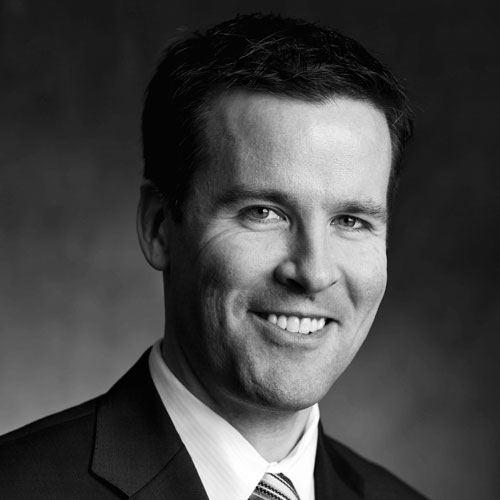The insurance business is complicated and competitive, and at Farmers Insurance, a company serving 10 million households with more than 19 million individual policies across all fifty states, it’s the responsibility of chief financial officer Scott Lindquist to ensure the right financial decisions are made to maximize the company’s success. Below, Lindquist explains more about his role.
How did you get into the insurance business?
Scott Lindquist: I’ve worked in finance my whole career. I was an accounting major at Penn State, and I received my master’s degree in business administration from the University of Connecticut. I started my career at PricewaterhouseCoopers as a staff auditor, where I served mostly insurance clients, and before I knew it, I was there fourteen years and a partner in the firm’s insurance practice.
What motivated you to transition to the CFO role?
Lindquist: Having worked in the auditing industry for a number of years, there hit a point in time when things started to change and new regulations were making the job less fun that it had been. I had already achieved my goal of becoming partner at a public accounting firm, so I started to set my sights on becoming a chief financial officer. To
accomplish my goal, I went to work as a chief accounting officer for a former boss and then chief financial officer of a newly public insurance company, The Phoenix Companies. I had specialized in insurance at PricewaterhouseCoopers, but The Phoenix Companies was where I truly learned the business. After three years there, I moved on to become the controller of Genworth Financial, which had recently spun off from GE, where I continued my learning journey.
How did you end up at Farmers?
Lindquist: As I stated, I was working toward a goal of being a chief financial officer, and during my career I specialized in the insurance industry. It was only a natural transition, when I was approached by Farmers Insurance eight years ago, to move out to Los Angeles as their chief financial officer.
What do you consider your primary responsibilities at the company?
Lindquist: I spend most of my time working with the CEO and his leadership team. I act as a pilot, navigating our finances around the objective of profitable growth. I spend most of my time looking forward, forecasting what 2016, 2017, and beyond look like from a financial perspective. I consistently review our processes to determine what is working versus what is not working and develop plans with my team around those items that need to be changed or reproduced. As an organization, we can’t fool ourselves about what’s doing well and what’s not; we must as leaders be honest with ourselves, and that takes courage.
How is your team structured?
Lindquist: Structurally, it’s a typical finance organization, with around 500 seasoned
finance professionals. The numbers we deal with are large, so we need a large group to keep the train running on time from a financial perspective. For example, we’re collecting and investing premiums for 19 million policies, paying 50,000 agents. We file more than 30,000 tax returns a year. We have a compliance function that files financials with state regulators as well as our shareholder, an investment management function that manages $25 billion in general account and retirement plan assets, and a forecasting and business analytics function focused on business insights with an eye towards shaping business results.
What are some of the challenges you face?
Lindquist: Large companies like Farmers have to be data-driven. We have more than 3,000 profit-and-loss combinations because we have a number of different books of business, all managed on an individual state basis. We work across three distribution channels (exclusive agent, independent agent, and direct-to-customer) across fifty states. That’s a lot of data to look at. As I work with my colleagues to shape the results, I look for potential issues and warning signs. We work together to proactively turn those into actionable plans.
What concerns are unique to your role as a CFO in the insurance industry?
Lindquist: The insurance industry is closely regulated by state insurance regulators. For example, we are required to have almost all insurance rates approved through them. Our government affairs team is responsible for maintaining relationships with state officials, and we work closely with them to ensure we are up to date on all pending issues.
How does Farmers plan to grow?
Lindquist: In the seven years I’ve been at Farmers, we’ve acquired three companies. Organically, we’re always looking to expand into new territories or new product lines. For example, we are investing to expand our exclusive agent business, traditionally dominant in the West and Midwest, to the Atlantic states. We have built up the Eastern states from $0 to $250 million in premiums over the last three years. That required detailed analysis around capital investment decisions, real-time monitoring of results, and quick course corrections, as necessary. It has been imperative that we constantly review our achievements and compare those to our goals so that we can improve and make any necessary course corrections along the way.
Is anything holding back growth?
Lindquist: Our industry is brutally competitive from a marketing perspective. We spend more than $6 billion a year in advertising, placing us in the top ten of all industries. It’s a challenge to keep price points competitive in order to grow while staying profitable. Additionally, we must be cognizant of where and how we invest our earned premiums to ensure continued investment growth and financial strength.
How does the culture at Farmers continue to drive growth?
Lindquist: Being eighty-seven years old, we have a long, deep-seated culture that’s best referred to as “Farmers Family.” We care about our customers and consider it our privilege to serve them. We care about our employees and agents, many of whom have helped build the organization over decades. We also care deeply about the communities in which our customers live and work. We just finished a two-year project working in Joplin, Missouri, which was ravaged by a tornado in 2011. We adopted the community and partnered with the city to help rebuild it. This project led us to Monmouth County, New Jersey, a community devastated by Superstorm Sandy. We will continue to work with that community and others to help them recover from disaster.
What are you looking forward to in 2015 and beyond?
Lindquist: The buzzword these days is “big data,” and I’m thinking a lot about “big finance data.” We have so much data; it’s critical to make it actionable. To help us do that, we recently built several very sophisticated data warehouses. Now we have more fingertip access to granular financial data that will help us understand what’s happening in the business—on a real-time basis. My personal objective is to continue that journey.

